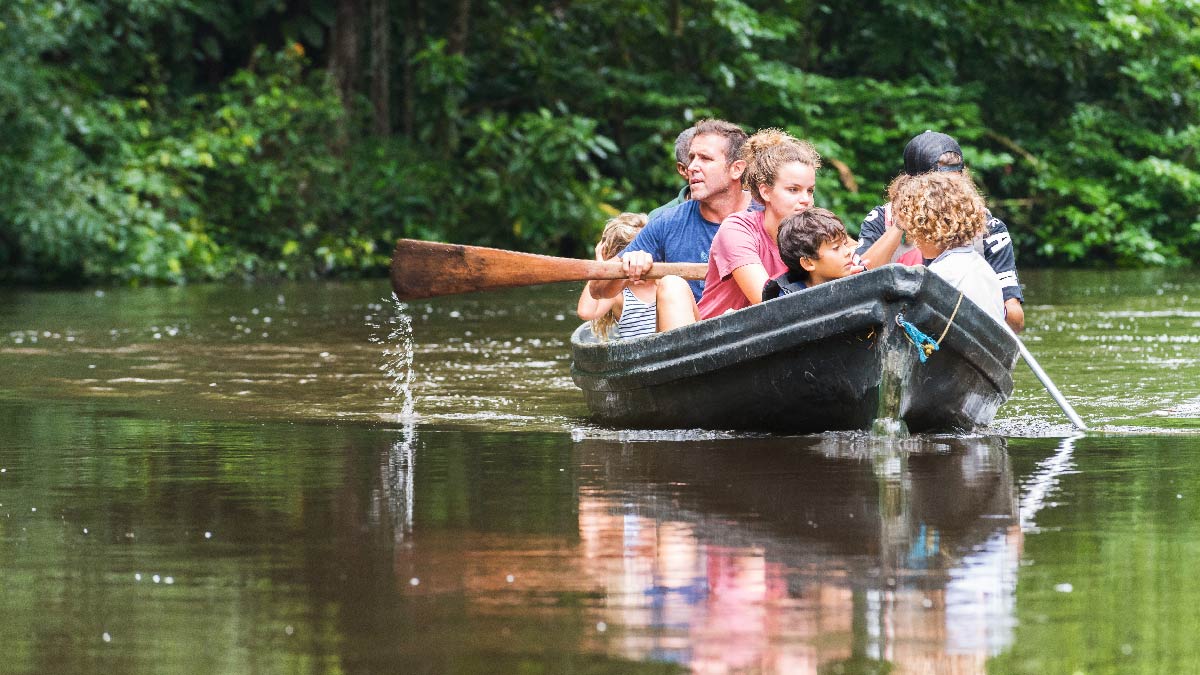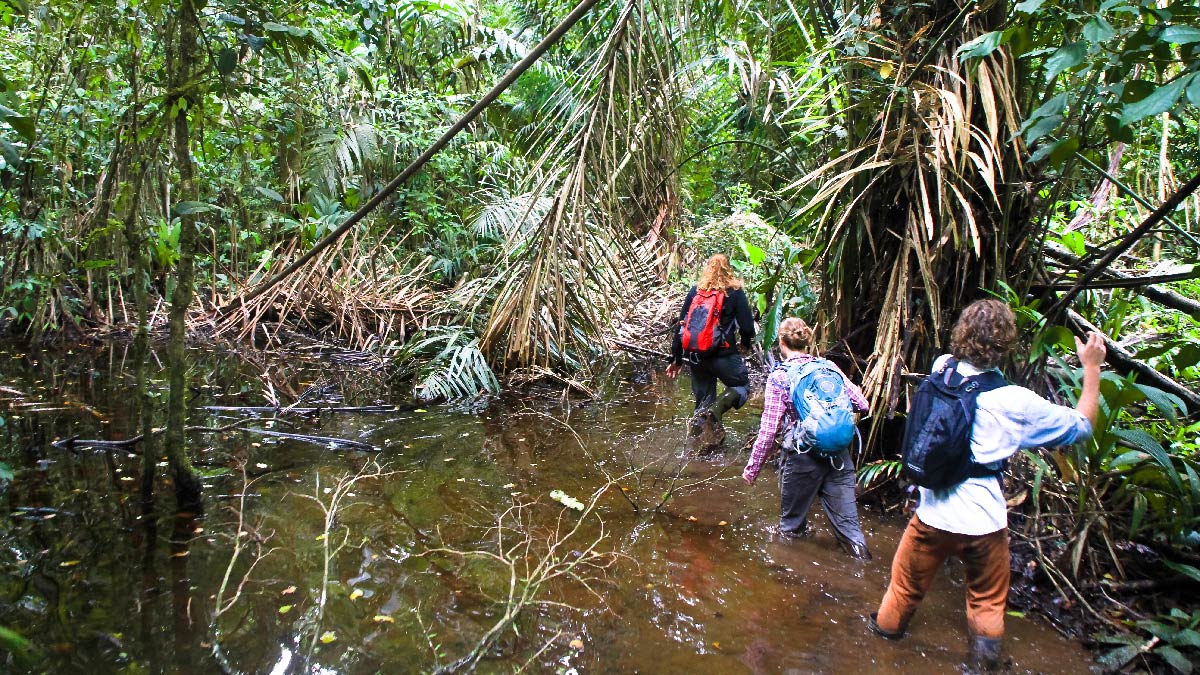There are many people who want to see turtles laying their eggs in Costa Rica, a unique and exciting experience that we should all see at least once in our lives.
However, many tourists behave in a way that could be harmful to the turtles and that puts the egg-laying process at risk.
So how can we watch turtles laying their eggs without putting the ecosystem at risk?
When does turtle nesting happen in Costa Rica?
If these are the things you want to know, read on to find out how you can enjoy one of nature’s best displays. Here we go!
Egg-laying period
If you are wondering when you should go to Costa Rica to see the egg laying, it is important to remember that the turtles arrive to lay their eggs between April and November.
So, does egg laying happen during this period?
Yes, however if you also want to see the baby turtles leave the nest and head to the sea, you have to come between July and September, which is the perfect time to see this magical spectacle.
Contenido
Places to see egg laying
Where do sea turtles lay eggs in Costa Rica?
This is one of the most important questions, to make sure you are in the right place at the right time.
The place most tourists go is Tortuguero. And there is a good reason for that!
It is mainly because this is a natural park where you can see four of the five species of sea turtles that come to Costa Rica. Isn’t that amazing!?
This park is incredibly beautiful and, as well as seeing turtles nesting, you can travel through the incredible network of lagoons and natural channels in the middle of the jungle.
You will also be able to see animals other than sea turtles, like crocodiles and manatees. A true paradise!
The olive ridley turtle
This turtle species has a body size of up to 90 cm in length, and can weigh up to 45 kilos!
These turtles lay between 100 and 120 eggs in each of their nests. They are one of the most common species in the world and, therefore, one of the easiest to see.
If you are wondering where to find the olive ridley turtle then this is the article for you.
This species of sea turtle can be seen on the Pacific coast between July and February. In the Ostional and Nancite areas, in a single night you could see more than 100,000 females arriving to lay eggs.
Birth of the turtles
The maturity of the different types of sea turtles varies from species to species. However, the reproduction process is the same for different kinds of turtles.
So how are sea turtles born?
Nesting is the most important phase in the entire reproduction process.
It all starts with the females coming out of the water, usually at night, to lay their eggs on the beach, as is the case in Costa Rica.
It sounds like a simple process, but in reality, female turtles use large amounts of energy to get to an area the tide does not reach. It can also take hours to travel about 10 metres.
Once they reach this area, they dig a nest using their rear fins.
After digging the nest to the perfect depth, the female lays her eggs quite quickly. Before returning to the sea, the females cover the nest to stop predators from destroying the eggs.
Sea turtles are born following an incubation period of between 1 and 2 months. Thanks to a lump that the babies have on the top of their nose, they can break the shell and push the sand away to reach the open air.
They will then begin their journey towards the sea and stay there until they mate.
A curious fact about this is that the temperatures around the nest can affect the sex of the offspring.
Everything you need to know about turtle egg laying
Now you know when and where to go to see the egg laying, there are a few other things to think about to make sure you have the best experience, and more importantly, to make sure you don’t do anything that would put the lives of thousands of animals at risk.
Tours to see the egg laying
We offer three completely different tour packages so that, as well as enjoying the best places to visit in Costa Rica, you get the chance to see the turtles nesting.
- In search of turtles
This is a 14-day holiday package to Costa Rica. The main stops include the Tortuguero National Park, where you can take a night tour to watch the sea turtles laying eggs or being born. An incredible option, don’t you think?
- Tortuguero and car to see where sea turtles lay their eggs
This option is very similar to the previous one, as you can also visit the amazing Tortuguero National Park.
However, after the visit, we will provide you with a 4×4 vehicle so you can explore Costa Rica on your own. A unique experience, exploring at your own pace.
- In search of whales and turtles
And, last but not least, an experience where you will get to see whales as well as turtles.
Seeing the turtles happens in the Tortuguero National Park, while the whale watching takes place on Dominical beach.
Visits to heavenly beaches are also included, so be sure to find out more about this package.
Transportation and how to get to the egg-laying spot
If you want to go to Tortuguero to see the sea turtles nesting or being born, you must take into account that this town lies between canals, so there is no road that will take you there.
The easiest way to do this is to buy a package like the ones we offer, because this gives you the option of travelling in a group or taking your own vehicle.
However, you can also get there using public transport or a car that you can leave parked in Cariari and pick up when you return.
Don’t forget that both public transport and the car can only take you as far as the end of the land, where you will then have to change to a boat to get to the Tortuguero National Park.
What you should keep in mind
With the aim of all tourism being sustainable, you should think about the following things when you go to see the turtle nesting. Remember that, to enjoy such a magical moment, you should not interfere with the normal behaviour of the turtles, because stress could lead to a failure to lay eggs.
Remember to keep a minimum distance of 20 metres between the area where you are and where the turtles are, and you must make as little noise as possible. Although it might be obvious, remember that you should not, under any circumstances, climb on or touch the turtles.
Please also remember that you are among animals in their natural habitat.
And under no circumstances should you pick up the turtles to take selfies with them. This is a common occurrence among tourists, who are keen to document the experience.
However, this behaviour endangers the turtles’ lives and their natural reproduction process. If you want to remember your trip, you can take photos from the required distance away and without using the flash.
Remember that you are in a natural environment, and that you need to look after it and leave it as clean as possible. So do not smoke or leave litter in the area. If you see any rubbish, pick it up, even if it is not yours, and you will have done the environment a favour.
When you are around the newborn turtles, be very careful with any lights, as these can disorient the babies and they could end up dying of dehydration.
If you see hammocks or objects on the sand, ask an expert to remove them, because the turtles could end up trapped in them.
If you are staying in a hotel that is on the beachfront, bear in mind that turtles may have laid eggs in the area. Be careful walking along the beach, try and walk close to the shore and don’t step on the dunes that have been formed.
If you follow all these tips, you can enjoy a unique experience without risking the lives of thousands of marine animals. Now that we have answered your question about “when turtles lay eggs in Costa Rica”, all that is left for you to do is pack your bags and enjoy your dream holiday. Bon voyage!















